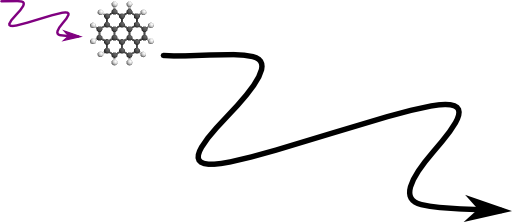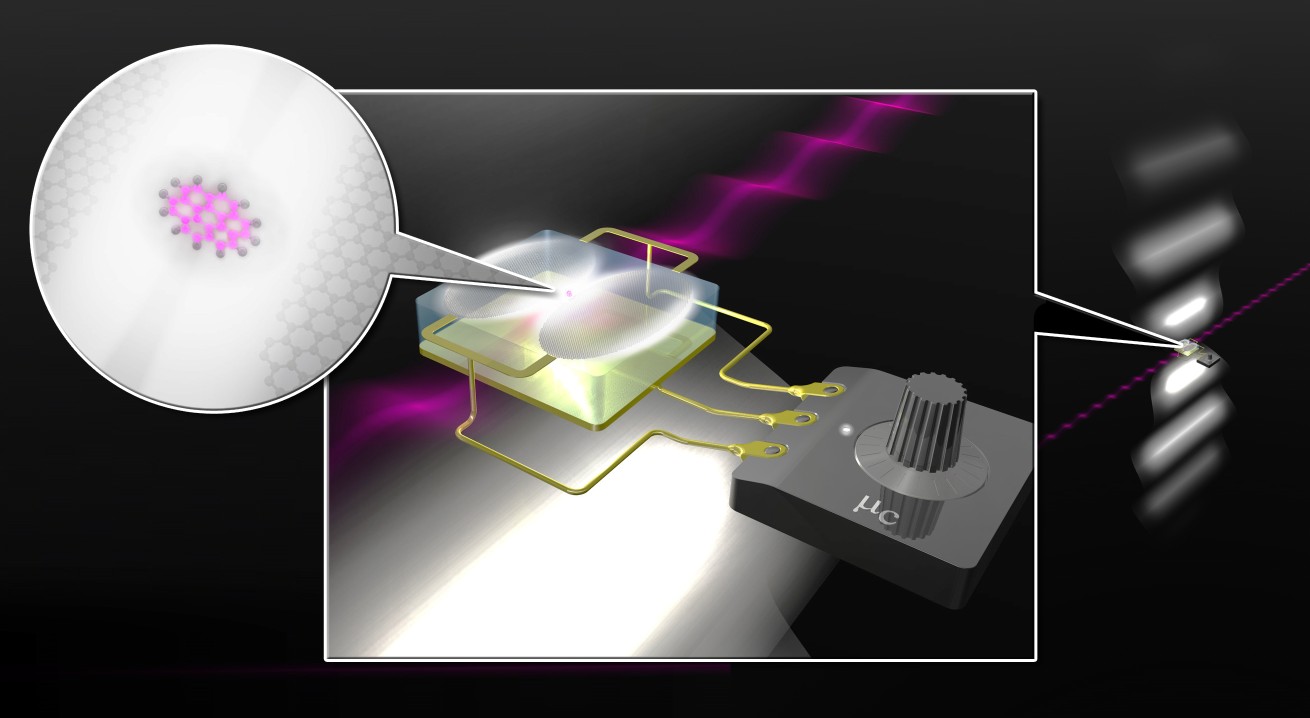![]() Graphene is a two-dimensional material with extraordinary properties. Its tunable conductivity makes the material a prime candidate for sophisticated light-matter interactions. We will see how graphene antennas can be used to dictate a molecule's emission frequencies
Graphene is a two-dimensional material with extraordinary properties. Its tunable conductivity makes the material a prime candidate for sophisticated light-matter interactions. We will see how graphene antennas can be used to dictate a molecule's emission frequencies
From Nobel Prize to Applications
Ever since the discovery of graphene and the well deserved Nobel prize for Geim and Novoselov in 2010, one of the main questions was how we may be able to transfer graphene's remarkable properties into applications. One of the approaches relies in the use of graphene as a plasmonic material: the newly arising field of graphene plasmonics tries to combine the features of plasmonics, i.e. strong electric field localization and enhancement with graphene's tunability and low losses.
As we have seen earlier, plasmonic nanoantennas may be used to realize effects that were impossible before, for example to allow forbidden transitions. Using graphene, we can naturally expect even more amazing applications that are simply not possible with conventional metallic structures.
Selective Emission - an Application Unique to the Use of Graphene
An international research team from Jena (Germany), Basel (Switzerland) and Kaust (Saudi-Arabia) has now proposed such an application that may be uniquely provided using graphene.. In their publication entitled “Tunable graphene antennas for selective enhancement of THz-emission”, the authors show how a specific molecule can be forced to emit electromagnetic radiation at certain specific frequencies.

Schematically, the process works as follows. The molecule is placed inside the feed of the carefully designed graphene antenna. This may happen by an atomic force microscope in an experiment or by a microfluidic channel in an actual device. The molecule is then transferred into an excited state by absorption of a photon in the visible or near ultraviolet frequency range.
Now, the graphene antenna is tuned to a specific resonance frequency of the molecule - just like a radio - using a certain gate voltage. Coronene can now lose energy very easily through this transition whereas other transitions are barely affected. Technically, the radiation rates of coronene are changed which is often called Purcell effect. Now, internal redistribution processes occur between different states of coronene.
These redistributions are much faster than any radiation relaxaion of the states itself. This leads to the following effect: If one of the states in the “redistribution chain” loses energy much faster than the others, the molecule will mainly emit light at that specific frequency, the tuned frequency of the graphene antenna. The authors call the entire process consequentially selective emission.
The frequencies at which the molecule emits are however not in the optical domain, they are in the so-called THz-gap, where functional devices are strongly needed. The application of selective enhancement cannot be realized with conventional plasmonic structures made of metals for two main reasons:
- any metallic antenna would influence the radiation rates at much more transition frequencies, most notably also in the visible
- metal structures are not tunable which would make them useful at a single transition frequency only
One might get the impression that graphene is “the better metal” at THz frequencies. This may indeed be true if we also regard the lower losses compared to metallic antennas.

We may ask if the predicted selective enhancement of coronene emissions is a special behavior of the very molecule. The authors claim that this is not the case since the emission properties of corenene are just an application of the fundamental genereralized Planck's radiation law for luminescence.
This is a very important aspect since such devices would be tremendously useful for spectroscopy: all THz transitions of potentially a huge class of molecules could be identified using just a single device! This would simplify the identification of these molecules to a great extent. Furthermore, the suggested graphene antenna is only roughly 1µm². Such a small dimension makes the device potentially the world's smallest spectrometer. The authors hope that the study will give graphene plasmonics a new perspective to implement functional devices that make use of the unique properties of this fascinating two-dimensional material.
Journal Page | arXiv | PDF
Related problem: In The "Permittivity" of Graphene, you can find out how graphene can be regarded as a dielectric slab with a certain permittivity to allow its realization in numerical simulations. This problem is at the core of how graphene plasmonics is dealt with in actual implementations, don't miss it!












